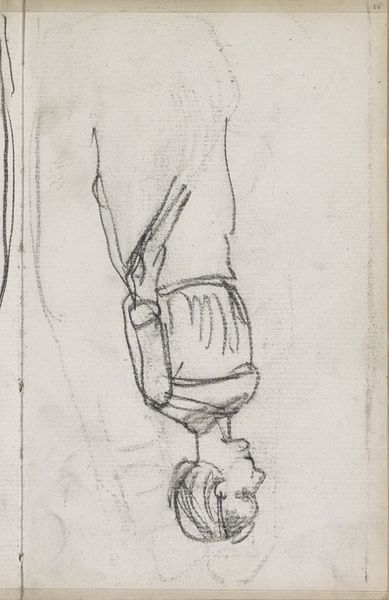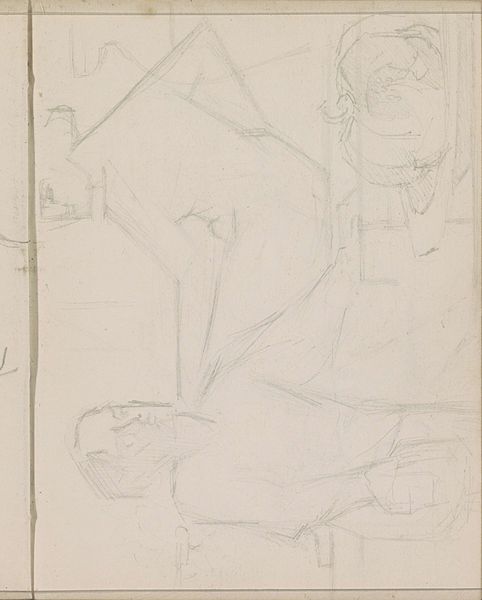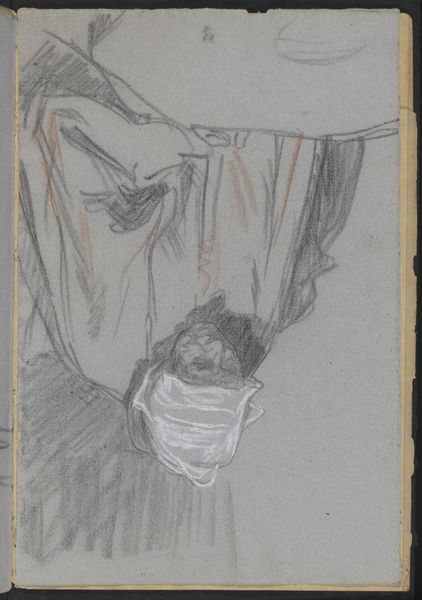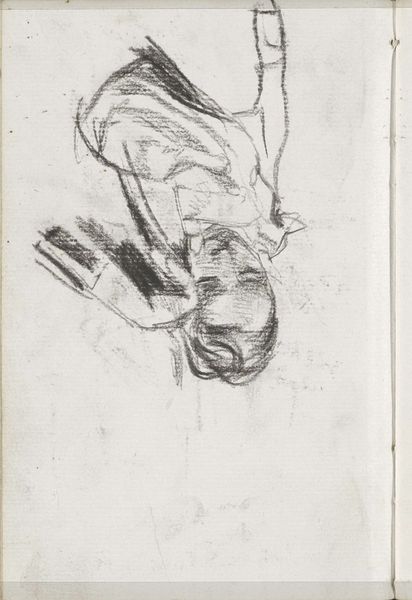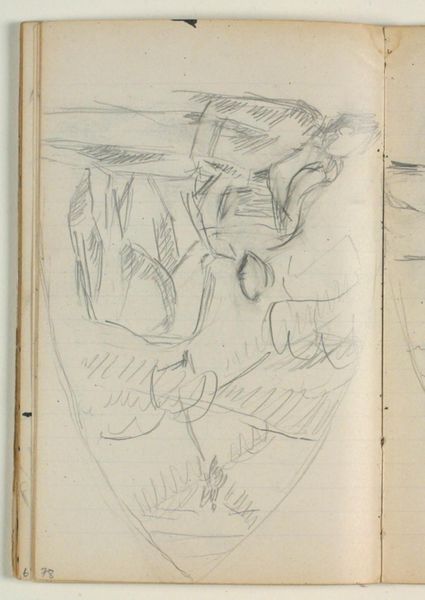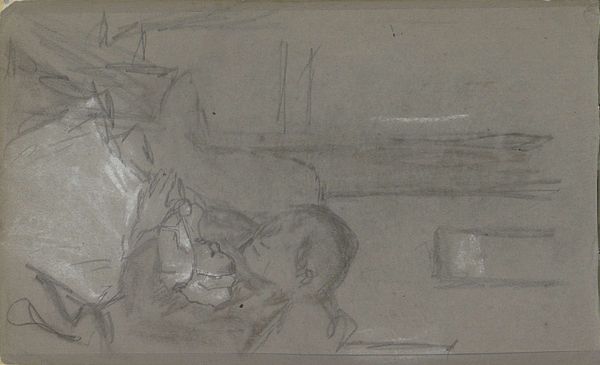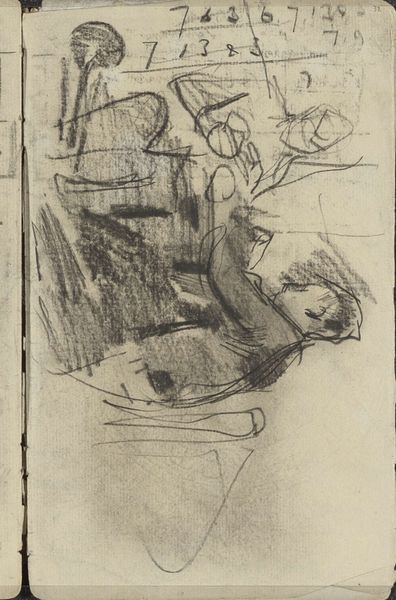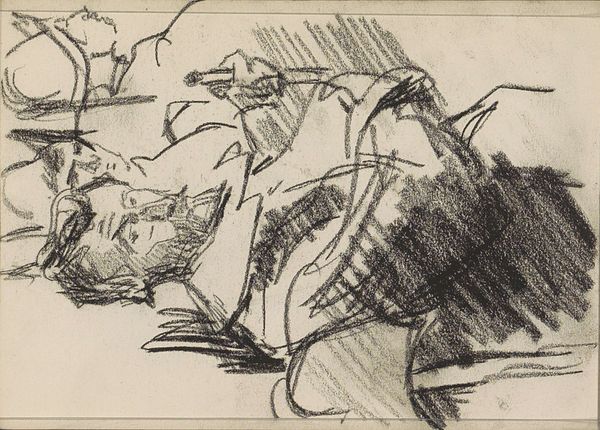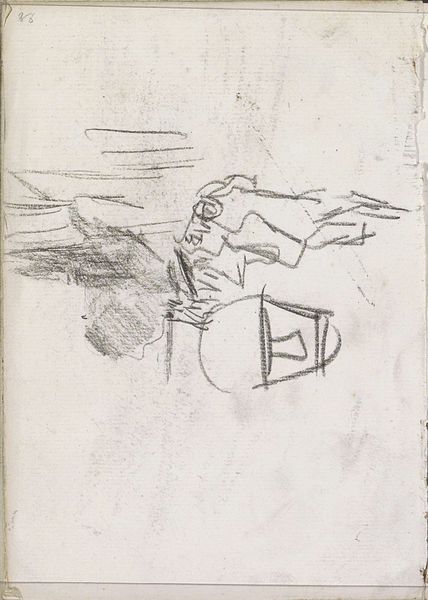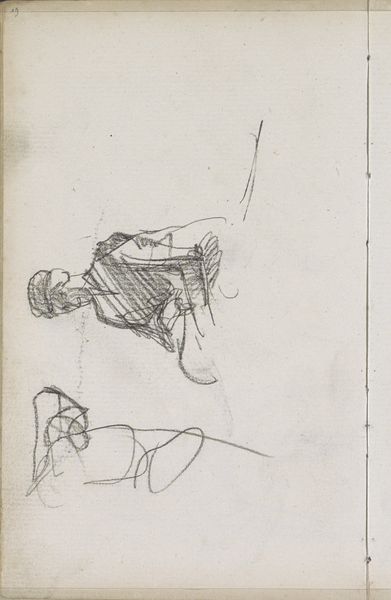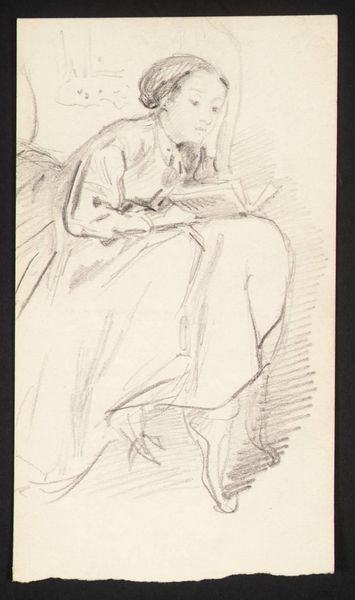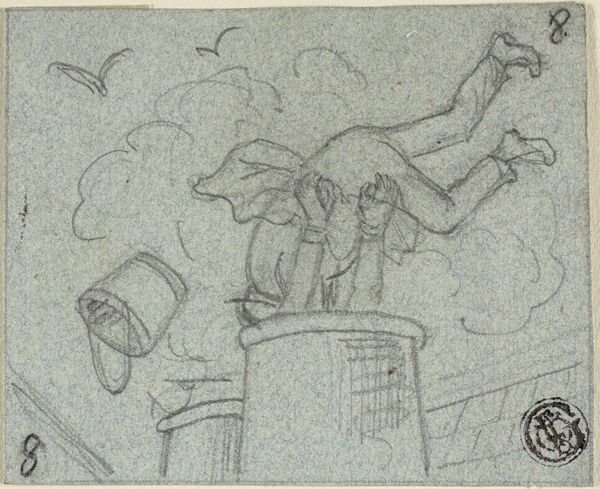
Interieur met een boer bij een rad, vermoedelijk van een werktuig 1874 - 1925
0:00
0:00
#
amateur sketch
#
toned paper
#
light pencil work
#
sketch book
#
incomplete sketchy
#
personal sketchbook
#
ink drawing experimentation
#
coloured pencil
#
sketchbook drawing
#
sketchbook art
Copyright: Rijks Museum: Open Domain
Curator: What strikes me immediately is the artist’s dedication to capturing everyday life, even the labor often overlooked. It seems rather melancholic doesn't it? Editor: It does. The pale-toned paper and tentative lines create a sense of transience, almost like glimpsing a memory fading. Before us is a page torn from a sketchbook of Jan Veth, it appears. The artwork, tentatively titled "Interieur met een boer bij een rad, vermoedelijk van een werktuig" depicts, as the title suggests, the interior scene with a farmer beside a wheel, likely part of some machinery. Its creation date is believed to fall sometime between 1874 and 1925. Curator: Interesting. Veth was active in the era of significant social upheaval. The farmer hunched over this large wheel symbolizes the toiling body, inseparable from the machinery and the cycles of labor. This visual echoes the growing class consciousness during the era of industrialization. One can only speculate, but how might the scale of the wheel influence your thinking of power? Editor: Precisely. While sketched with light pencil work, it's potent in what it signifies. Considering feminist and Marxist theory, there is much we can infer here, I mean even though just a sketch in his personal book. This simple portrayal hints at exploitation and a power imbalance between humanity, technology, and economy. I think his experimentation using a pencil lends authenticity to the farmer's presence—there's nothing romanticized about this depiction. The wheel could, depending on one’s perspective, signal endless toil—perhaps mirroring broader societal conditions too. Curator: It brings to the forefront the often-unseen figures in a rapidly changing landscape. Even the location itself, inside the confines of what is either an artisan workshop or agricultural center. It emphasizes that this figure is the pillar holding society together. A vital aspect to remember is the political backdrop, of course, such art was received during the era it was released. Editor: Absolutely. This sketchbook piece offers a commentary on labour. The sketch exists because of an economic ecology, so, if it’s on display it should carry conversations about socioeconomic realities in order to bridge both history and modern narratives. Curator: Indeed. Reflecting upon Veth's work, it serves as a poignant reminder of art's capacity to make seen the stories of lives. It provides valuable insights that we as historians are inclined to consider. Editor: And to be made aware of not just the life of that particular worker at that time, but an ongoing, endless effort by workers to resist oppression and to advocate for human flourishing everywhere.
Comments
No comments
Be the first to comment and join the conversation on the ultimate creative platform.
